Table of Contents Show
In the world of yoga, the phrase “how to make a yoga mat less slippery” is uttered more frequently than “namaste.” It’s a problem that plagues yogis everywhere, but it doesn’t have to be an eternal struggle. In this comprehensive guide, we’ll explore various methods to make your yoga mat less slippery and improve your overall practice. Let’s dive in!
The Slippery Situation: Understanding the ‘Why’
Before we dive into how to make a yoga mat less slippery, let’s understand the ‘why’. A new yoga mat tends to be slippery due to the thin layer of factory residue on its surface. On the other hand, an old yoga mat might become slippery from accumulated sweat, oil, and dirt.
Disclosure: As an Amazon Associate I earn from qualifying purchases.
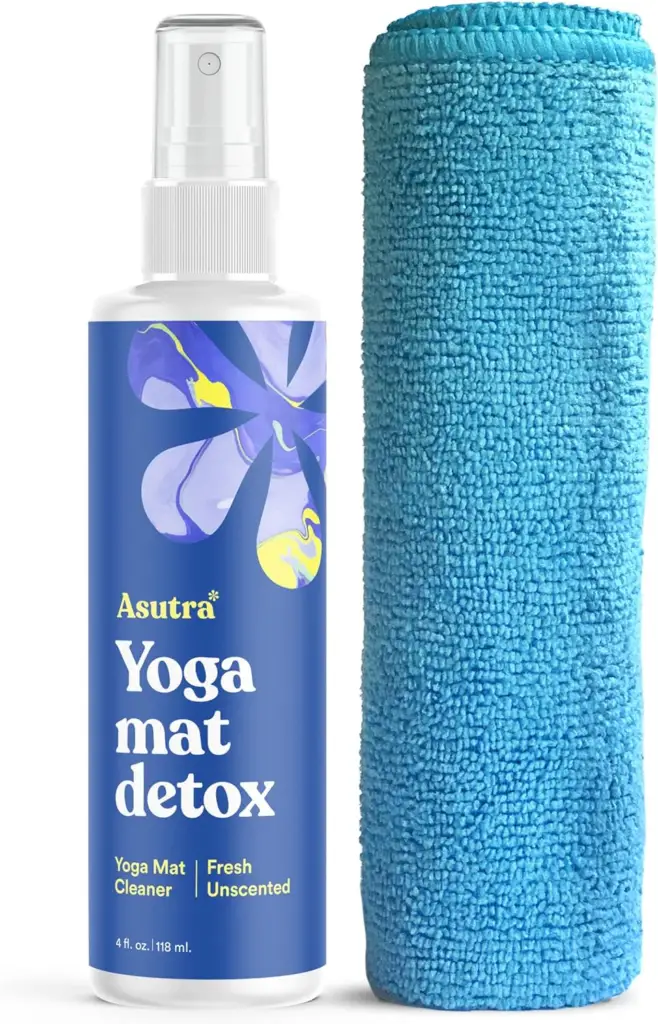
The Slippery Yoga Mat Dilemma: Why Do Mats Become Slippery?
Before we dive into the solutions, let’s first understand why yoga mats become slippery. Here are some common reasons:
- Material: Some yoga mat materials are inherently more slippery than others. PVC and TPE mats, for example, can be less grippy than natural rubber or cork mats.
- Newness: A brand-new mat can be slippery due to a thin film on the surface. Fear not, this film typically wears off with use.
- Sweat: As you practice, your sweat can make the mat slippery, especially in hot yoga classes.
- Cleaning: Using the wrong cleaning solution or technique can contribute to a slippery mat.
Now that we know the culprits behind a slippery yoga mat, let’s explore how to tackle the issue!
Preparing a New Yoga Mat: Yoga Mat Cleaning – The Ritual of Unveiling the Grip
Got a brand new yoga mat? Congratulations! But before you jump into your first downward dog, you need to prepare your mat to unveil its true potential.
Washing the Mat with Soap and Water
This method is simple and effective. Here’s what you need to do:
- Fill a bathtub or large basin with lukewarm water and add a few drops of mild soap.
- Submerge your mat in soapy water and gently scrub it with a soft cloth or sponge.
- Rinse the mat thoroughly with clean water.
- Roll the mat up in a towel to remove excess water and then lay it flat to air dry.
The Vinegar Solution: A Natural Way to Remove Slipperiness
Another way to prepare your new yoga mat is by using a vinegar solution. Mix equal parts of water and white vinegar in a spray bottle. Lightly spritz the solution on your mat and gently wipe it with a soft cloth. Let the mat air dry completely before using.
The Salt Scrub Method: A Time-Tested Technique
Some yoga enthusiasts swear by the salt scrub method. Simply sprinkle coarse sea salt on your mat and let it sit for 24 hours. Afterwards, brush off the salt and wipe the mat down with a damp cloth. Allow the mat to dry before using.
Remember, patience is a virtue! Give your mat ample time to dry before jumping into your practice.
The Break-In Period: Give Your New Mat a Chance to Shine
If you’ve just unrolled a new yoga mat and it feels slippery, don’t worry! This is completely normal. Most new mats have a break-in period where the surface film will wear off, allowing for better grip. Here’s how to expedite the break-in process:
- Wipe it down: Use a damp cloth with mild detergent to gently clean the surface of your new mat. This can help remove the slippery film.
- Practice, practice, practice: The more you use your mat, the more it’ll wear in and become grippier. Just like a new pair of shoes, you need to break them in.
- Sunbathe: Exposing your mat to sunlight for short periods can help break it in faster. However, don’t leave it out for too long, as excessive sun exposure can damage the mat.
No-Slip Solutions: Enhancing Your Mat’s Grip
If your mat continues to be slippery after the break-in period, it’s time to explore some solutions. Here are five effective methods for improving your yoga mat’s grip:
1. Use a Yoga Towel
A yoga towel is a thin, absorbent layer designed to be placed on top of your mat. It’s specifically designed to provide a better grip as you sweat. Here are some reasons why a yoga towel is a fantastic solution:
- Absorbs sweat: By wicking away moisture, the towel prevents sweat from making your mat slippery.
- Improves grip: Many yoga towels have a textured surface or silicone dots on the bottom, providing additional traction.
- Easy to clean: Just toss the towel in the washing machine after class, and you’re good to go!
- Versatile: You can use a yoga towel with any type of mat.
2. Apply a Mat Spray or Grip Enhancer
Mat sprays and grip enhancers can work wonders in improving your mat’s grip. Here are two popular options:
- Mat spray: A mixture of water, witch hazel, and essential oils, mat sprays can help clean and refresh your mat while improving grip. Simply spritz it onto your mat before practice, let it air dry for a few minutes, and enjoy the enhanced grip.
- Grip enhancer: Grip enhancers are designed to increase your mat’s traction. They can come in the form of spray, lotion, or rosin powder. Apply the product as directed on the packaging, and you’ll notice a significant improvement in your mat’s grip.
3. Choose the Right Yoga Mat Material
If you’re still struggling with a slippery mat, it might be time to consider upgrading to a different material. Some yoga mat materials are naturally grippier than others. Here are a few examples:
- Natural rubber: Known for its excellent grip, natural rubber is eco-friendly and provides a strong, stable surface.
- Cork: Another eco-friendly option, cork is naturally antimicrobial and provides excellent traction, especially when wet.
- Polyurethane: While not as eco-friendly, polyurethane mats offer superior grip and are ideal for hot yoga practitioners.
4. Keep Your Mat Clean
Regular cleaning is crucial for maintaining your mat’s grip. Here are some tips to keep your mat clean and grippy:
- Clean after each use: Wipe down your mat with a damp cloth and a gentle cleaner after each practice. This will remove sweat, dirt, and oils that can make your mat slippery.
- Air dry: Allow your mat to air dry completely before rolling it up to prevent mould and mildew growth.
- Deep clean periodically: Every few months, give your mat a deep clean by submerging it in a bathtub filled with warm water and a few drops of gentle detergent. Gently scrub the mat, rinse it thoroughly, and allow it to air dry.
5. Adjust Your Technique
Sometimes, the issue isn’t the mat, but rather our technique. Here are some tips to improve your grip during practice:
- Engage your muscles: Properly engaging your muscles helps to distribute your weight evenly and improve stability.
- Use props: If you’re struggling with a particular pose, using props like blocks, straps, and bolsters can help improve stability and reduce slipping.
- Slow down: Rushing through poses can cause instability and increase the likelihood of slipping. Focus on slow, controlled movements.
You may also like How Do You Clean Your Yoga Mat Effectively? Achieve Sparkling Clean Mats in 6 Fascinating Ways
How to Make a Yoga Mat Less Slippery: Mastering Yoga Techniques for Better Grip
While having a non-slip yoga mat is important, your technique can also impact your grip. Here are some tips to improve stability during practice:
Distribute Weight Evenly
Focus on distributing your weight evenly across your hands and feet during poses. This can help prevent slipping and improve balance.
Engage Muscles and Focus on Alignment
Proper alignment and muscle engagement can contribute to a more stable practice. Consider taking a yoga class or working with an instructor to refine your technique.
Breathing and Relaxation Techniques
Practising deep, controlled breathing and relaxation techniques can help improve focus and stability during your yoga practice.
You May Also Like: Breaking in Yoga Mat: 5 Unexpected Tricks for Overcoming This Menace
Conclusion: Embrace the Journey to a Non-Slip Practice
There you have it, folks! By following this comprehensive guide on how to make a yoga mat less slippery, you can enhance your practice, improve your safety, and finally say goodbye to the dreaded slip and slide of a slippery yoga mat.
Remember, the key is to understand the cause of slipperiness, maintain a clean mat, and employ the right techniques and accessories to keep you stable and grounded during your practice.
FAQs
Q1: What type of yoga mat has the best grip?
A: Natural rubber, cork, and polyurethane mats tend to have the best grip. However, individual preferences vary, so it’s essential to test different materials and find what works best for you.
Q2: How often should I clean my yoga mat?
A: Ideally, you should clean your yoga mat after each practice. This helps to remove sweat, dirt, and oils that can make the mat slippery. Additionally, deep clean your mat every few months for optimal grip.
Q3: Can I use a regular towel instead of a yoga towel?
A: While you can use a regular towel, it’s not ideal. Yoga towels are specifically designed to improve grip and absorb sweat, whereas regular towels may not provide the same level of traction.
You May Also Like: 7 Ways the Sure Grip Yoga Mat Transforms Your Yoga Journey: A Deep Dive
Q4: Why does my yoga mat get slippery when wet?
A: When your mat becomes wet from sweat, the moisture can reduce the friction between your hands or feet and the mat’s surface, causing it to become slippery.
Q5: Can I use a hair dryer to dry my yoga mat?
A: It’s not recommended, as the heat from a hair dryer can damage your mat. Instead, allow your mat to air dry completely by hanging it or laying it flat in a well-ventilated area.
Q6: How can I improve my grip during hot yoga classes?
A: To improve your grip during hot yoga classes, consider using a yoga towel, applying a grip enhancer, or using a mat specifically designed for hot yoga, like a polyurethane mat. Also, focus on engaging your muscles and practicing slow, controlled movements.
Q7: How long does it take to break into a new yoga mat?
A: The break-in period for a new yoga mat varies depending on the material and how often you practice. Generally, it can take anywhere from a few days to a few weeks of regular practice for your mat to become less slippery.
Q8: Can I use a non-slip spray on any yoga mat material?
A: Most non-slip sprays can be used on various yoga mat materials, but it’s essential to read the product instructions and test a small area of your mat before applying it to the entire surface.
Q9: What should I avoid using to clean my yoga mat?
A: Avoid using harsh chemicals, alcohol, or abrasive scrubbers when cleaning your mat, as these can damage the mat’s surface and potentially make it more slippery. Stick to gentle cleaners and a soft cloth or sponge for best results.
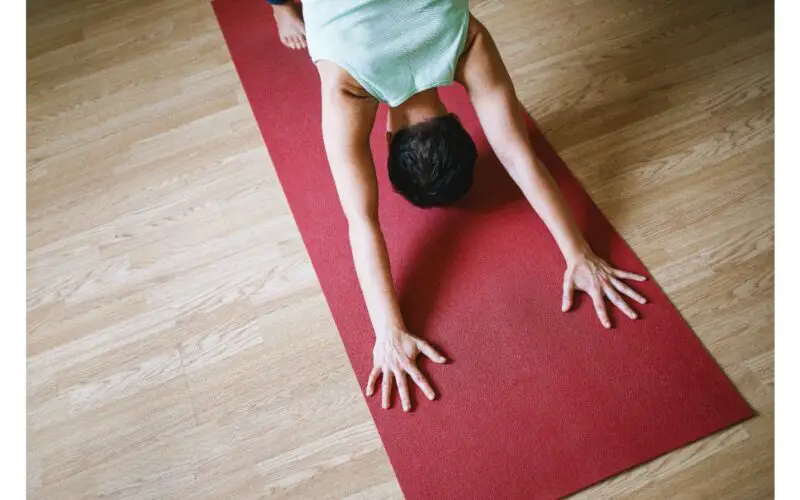

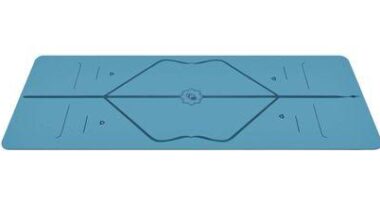
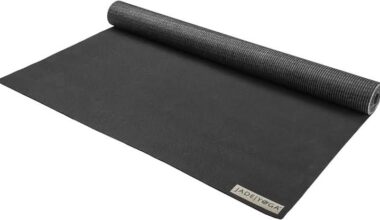
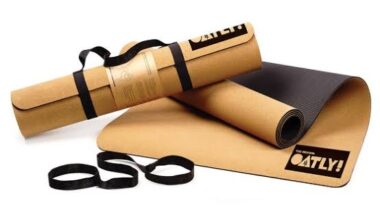

Comments are closed.